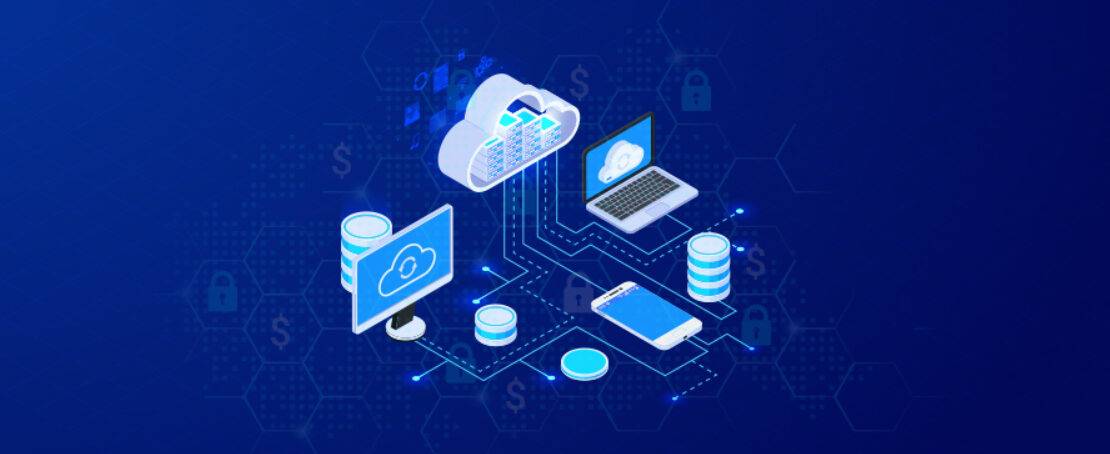- January 21, 2022
- Posted by: Vaibhavi Tamizhkumaran
- Category: Cloud Engineering

Here’s a step-by-step guide from Indium Software to getting this right
Even if some jobs could be completed in-house, successful firms realise that certain duties are better left to the experts. This applies to everything from outsourcing your whole hiring to payroll processes to a third-party HR business.
Many firms already understand why they should shift their operations to AWS when it comes to cloud services. The appeal of AWS is ubiquitous, whether it’s for the enhanced scalability, improved cost effectiveness, desire to use new technologies and services or simply to get out of the data centre business.
However, setting up and managing your cloud optimization services yourself is doable, it may not be something you want to do. Managing cloud services will mean that you will be responsible for maintaining the infrastructure once you have chosen and deployed server instances. You’ll need to provide in-depth server monitoring, maintain track of changes and performance, and ensure that your systems are up-to-date and secure with existing fixes. You’ll also need to keep track of how much you’re spending and figure out ways to cut costs.
What is Cloud Optimization?
The process of analysing and adjusting the allocation of cloud resources that power infrastructures, applications, and workloads to improve performance by minimizing time, effort, and cost due to over-provisioning is known as cloud optimization.
Each workload has its own set of needs, which fluctuate over time depending on the load of profile. Connecting all of these workloads manually to cloud resources and continuous cloud optimization is not possible for humans. Because manually tuning trillions of combinations at rapid speed, around the clock, is too difficult. Enhanced optimization can be obtained by utilising machine learning.
When apps’ constantly changing requirements are handled and combined with the best cloud resources, they function incredibly well. Optimal setups employ surprisingly fewer resources and provide noticeably better performance at reduced prices, giving users and app owners alike more value.
Optimizing cloud spend has been the top cloud priority for most companies for the last few , according to the 2020 Flexera State Of The Cloud Report. Many organisations are currently having difficulties in this area, particularly when it comes to overspending.
According to the survey, many Infrastructure and Operations teams are still operating on traditional data centre principles and lack the essential organisational mechanisms to manage cloud expenditures. In fact, 40 percent of IaaS instances were provided with more resources than the workload required.
The advantages of cloud engineering and infrastructure are numerous. Let’s take a closer look at them.
Maximize savings and improve ROI from a host of tried and tested best practices
Contact Us
Flexibility
Cloud vendors promote the concept of shared responsibility, which gives customers more freedom and control. According to that notion, your cloud vendor is in charge of hosting your operating system and overall infrastructure security while you are in charge of cloud scaling and security.
Cost-optimization
You can reduce operational costs by utilising shared responsibility and cloud-based managed services. You need fewer personnel to handle your infrastructure because the cloud vendor is responsible for security and hosting.
Responsibilities are limited
Managed services are available to businesses who opt to host their data in the cloud. This means they’ve entrusted a cloud provider with enhancing and optimising their operating skills. As a result, clients select the level of control they want over their infrastructure. AWS, for example, gives you operational flexibility, addresses security concerns, and assists you in optimising capacity and implementing cost-cutting measures. They give best results in monitoring, security, and incident management.
Cloud Optimization process
Workloads utilize a combination of AI, machine learning, and prediction technology to accomplish cloud infrastructure optimization. Costs and previous performance are thoroughly investigated. The study’ findings and deep insights are then utilised to develop recommendations and advise optimal resource and parameter configurations to enhance cost and performance even more. These suggestions give IT Operations a better grasp of how the cloud works, allowing them to increase performance and overall company effectiveness.
Technology Generations: As applications develop, infrastructure requirements increase, expenses rise, systems become more sophisticated, and understanding all of this becomes increasingly difficult. Despite the fact that first-generation cloud optimization solutions focus on transparency and optimization, they are a deep-rooted spin-off of complicated next-generation solutions designed to secure extensive capabilities such as risk reduction and performance enhancement.
Optimization that is consistent and automated: Next-generation technologies go well beyond simple suggestion. By integrating into the continuous delivery pipeline and interfacing with the tools coordinating cloud deployment, optimization engines weave optimization into the fabric of day-to-day development and release processes. Machine learning and deep ecosystem integration help businesses handle the complexity of cloud-native settings and apply optimizations on a continual, and automated basis.
The way forward
When human expertise is combined with artificial intelligence and machine learning, businesses will be able to make interventions that would not be conceivable if they relied just on people. Even the best engineers and programmers experience doubt, which significantly impacts their decision-making. Machines, on the other hand, have no such reservations. Even in cases where there is a lot of uncertainty, AI-powered optimization engines and tools can test hundreds to millions of new combinations until they find one that works.
The Cloud optimization process is automated at the enterprise level when optimization 2.0 technology is integrated into the application deployment platform. Enterprises get the best of both worlds with Optimization 2.0: cloud freedom, modularized code thanks to microservices, rapid delivery of new features and products, and higher margins and reduced costs thanks to autonomous, continuous optimization on their application delivery platform. All of this applies to enterprise-developed application deployment platforms, whether self-managed Kubernetes deployments or managed Kubernetes deployments by Cloud Service Providers.




